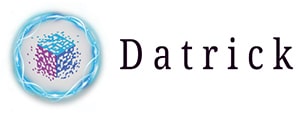
ETL Best Practices with Design Patterns and Use Cases
Are you looking to master ETL data integration? If so, you’ve come to the right place. In this article, we’ll go over best practices, design patterns, and use cases for successful data integration. We know that mastering these concepts can be complex and intimidating – but don’t worry. By the end of this article, you’ll have a better understanding of how to optimize your ETL processes.
So, let’s jump right in!
ETL Systems
ETL systems are like a finely-tuned orchestra, with each component playing its part in creating harmonious data integration. Automation of ETL processes is key for ensuring reliable data quality and timely batch processing in any cloud environment.
Test automation helps ensure that the system functions as expected. It also makes it easier to integrate new components into existing architectures.
By implementing best practices for ETL design patterns, organizations can leverage their data more effectively and improve their overall performance. Businesses can focus on driving results from their integrated datasets without worrying about complex migration issues or manual scripting,
To ensure your organization’s ETL solution meets these expectations, let’s look at some of the best practices available today.
ETL Best Practices
Firstly, the security of your data is paramount. You must ensure it can’t be accessed or manipulated by those with malicious intent. Secondly, testing your ETL processes and validating your data ensures accuracy and quality in the products you create. automation for both development and deployment will help keep a project on track and boost productivity when implemented correctly.
Optimization techniques such as indexing and caching can also ensure that even large datasets process quickly and efficiently.
Finally, scalability should always remain top of mind. Make sure that any changes you make won’t break existing integrations or cause unexpected issues down the line.
ETL Design Patterns
As with any type of engineering, there are certain methods to design a successful integration process. Creating an effective data integration project involves several aspects, such as performance tuning, debugging, testing, and architecture.
When it comes to ETL mapping, you need to carefully consider each step before implementing it. This is especially true if you’re dealing with unstructured or semi-structured data sources. Mapping out the entire workflow beforehand can help run your system smoothly from start to finish.
ETL Mapping
Mapping is a critical component when designing an effective data integration strategy. It involves describing how source data fields should be transformed to match target systems’ requirements. This process often requires understanding both business logic and technical regulations. This will ensure the accuracy of the transformation from the source system to the target system.
A successful mapping plan can make or break your ETL project! It’s important to keep mapping top-of-mind as this will provide a strong foundation for use cases that follow.
ETL Use Cases
Data integration through ETL is like an intricate dance, where all the pieces must be in place and working together. With that said, there are several use cases to consider when mastering ETL:
- Automation of data processing,
- Troubleshooting of issues with data quality or lack thereof,
- Optimization of data pipelines for maximum efficiency,
- Scheduling of tasks to ensure timely delivery, and
- Governance structures in place to ensure compliance.
To take full advantage of these use cases, organizations should invest in solutions specifically designed for ETL processes.
Understanding how each individual piece works together is critical for developing effective strategies.
ETL Patterns
As an ETL practitioner, mastering the best practices of data integration is essential to get it right. Patterns are key for successful and efficient implementations that meet your business needs in terms of data governance, quality, transformation, security, and privacy.
A good starting point is understanding the different types of patterns: single-step pattern, multi-stage pattern, or hybrid pattern, as well as when each will be most effective on a given project. By properly analyzing these factors, you can ensure appropriate choices throughout the process and obtain the desired results with fewer problems along the way.
So what comes next? Documenting your approach – another crucial step towards achieving ETL mastery.
ETL Documentation
Moving on from ETL patterns, let’s talk about the importance of documenting your ETL process. Successful data integration depends on solid documentation that establishes standards and guidelines for future processes. Using it helps with data governance, as it ensures that all members of an organization are aware of how the data they save or use is being handled.
Here are three reasons why documentation can be helpful:
- Data validation: Properly documented processes help ensure that all incoming data has been validated and meets set requirements before being stored in a database.
-
Staging environment: A well-documented staging environment ensures that any changes made during development don’t affect production environments and vice versa.
-
Data profiling: Documenting allows you to track where each piece of data came from, which is especially useful for creating detailed profiles of different datasets.
With proper documentation in place, organizations can easily audit their ETL processes at any time and make sure everything is running smoothly. This makes debugging easier and improves overall quality control. So, it pays off to invest some extra effort into detailing how exactly ETL works within an organization!
Now, let’s move on to discussing how to create effective ETL dashboards…
ETL Dashboard
ETL dashboards are like the cockpit of a data plane, giving you complete control and visibility over your ETL operations. Dashboards give you an overview of all aspects of ETL, including connectivity, security, scalability, performance, and automation.
They provide real-time insights into how well your ETL processes are running and allow you to easily monitor any potential issues with ease. With advanced analytics capabilities, they also make it easy to identify patterns within your data which can be used for further optimization or troubleshooting.
And since these dashboards are completely customizable, you have full flexibility in terms of designing them to perfectly fit your particular needs. So instead of just managing each step manually, now you can automate the entire process from beginning to end with an ETL dashboard!
Let’s examine the components of a successful ETL data flow diagram.
ETL Data Flow Diagram
Creating an ETL data flow diagram is a critical step in mastering effective ETL processes. It’s important to understand the nuances of your ETL architecture, metrics, scheduling, and data cleansing/validation so that you can build out your design document accurately.
Without this level of detail, it will be difficult to develop efficient processes for your data integration.
Understanding each component of the diagram, including source systems and target databases, is crucial for successful ETL deployments. Mastering ETL requires this understanding.
From there, you can begin developing a comprehensive design document that outlines all aspects of the system from start to finish.
ETL Design Document
To become skilled in ETL, one must have expertise in testing and governance of data. To achieve successful integration, it is important to consider these four key elements:
- Data quality: Ensuring accuracy and consistency throughout the pipeline.
- Data lineage: Maintaining traceability from source to destination.
- Data lake: Storing vast amounts of data in an easily accessible format.
- Data governance: Establishing control over access and usage.
By taking these essential components into account, organizations can achieve their desired outcomes while avoiding costly mistakes along the way.
The most effective path ahead is one where every step forward is intentional and purposeful; this begins with creating an appropriate template for an ETL design document.
ETL Design Document Template
ETL design documents are often determined by the organization’s data governance policies and practices. An effective ETL design document must include details about:
- The source system architecture
-
Target system architecture
-
Data transformations
-
Quality assurance processes
-
Testing approaches
-
Automation strategies
It is also important to consider how best to manage changes over time as well as create a plan for ongoing maintenance within an established timeline.
Crucial here will be understanding which parts of the process can likely benefit from automation so you can use those resources elsewhere during your etl life cycle.
ETL Life Cycle
The ETL life cycle is a critical component of any successful data integration project. It starts with planning and design, then moves through development, testing, scheduling, optimization, automation, security, and finally, deployment of the ETL process in the production environment.
Throughout this journey, it’s important to understand that all elements need to be addressed, from designing an efficient data pipeline architecture to automating processes for optimal performance. Testing should include validations at each stage as well as unit tests along the way.
Scheduling needs to account for different load volumes while keeping consistency between source and target systems. Optimization involves finding ways to make sure that processing time is minimal without sacrificing quality or accuracy. Automation refers to building robust tools and pipelines that can run on their own without manual intervention.
Security plays an important role in protecting sensitive customer information during various stages of the transformation process. To wrap up this section, let’s look at how to apply best practices when constructing an ETL pipeline.
ETL Pipeline Best Practices
Achieving excellence in ETL integration is no simple feat, yet you can achieve it with the right tools and techniques. For organizations aiming to deploy reliable data pipelines, mastering essential best practices can make all the difference.
To that end, let’s consider some of the core principles for designing a successful ETL pipeline:
- Automation: Automate as much of your process as possible to reduce manual errors and speed up development cycles.
- Testing: Test your code thoroughly at each stage using unit tests, integration tests, regression testing, etc.
- Logging: Adopt advanced logging strategies such as performance metrics and log aggregation to identify issues quickly.
- Security: Be mindful of security risks posed by external sources or malicious actors when handling sensitive data.
- Scalability: Design your system from the outset with scalability in mind so you’re not caught off guard later on down the road.
From here, we are ready to move on to exploring an even deeper level of mastery by understanding how to implement these best practices within a well-defined ETL template.
ETL Template
As we’ve discussed, ETL is a critical element of successful data integration. And understanding the best practices, ETL design patterns, and use cases for it can help us master this process.
To ensure that our ETL processes are efficient and effective, we need to adhere to certain standards, optimize the tasks involved in each job run and test them thoroughly before they enter production environments. Additionally, proper governance processes need to be established to monitor performance, validate results and schedule jobs accordingly.
With all these steps in place, we’re ready to move on to exploring ways of visualizing our ETL workflows so as to gain further insights into our data integration operations.
ETL Visualization
ETL visualization is like a map of the data integration process. It provides a visual way of understanding and tracking how the various components in ETL fit together.
Data cleansing, data wrangling, data normalization, data governance, and data profiling are all important steps that can be followed using an ETL visualization tool. With this tool, companies have greater control over their processes as it allows them to easily identify areas for improvement or optimization. This also helps to ensure accuracy and quality, as mistakes are easier to detect from the visuals rather than having to manually go through each step of the process.
Furthermore, by utilizing ETL visualization tools, businesses can save time on manual tasks such as debugging and testing code, which would otherwise take significantly longer without it.
In summary, ETL visualization is key for successful data integration due to its ability to bring clarity and order into the complex world of analytics.
Conclusion
Mastering ETL is essential for successful data integration. It requires a thorough understanding of best practices, ETL design patterns, and use cases to ensure accuracy and efficiency in the process. By following these steps, we can create an effective ETL pipeline that will help us unlock the power of our data.
Through thoughtful mapping strategies and streamlined templates, we can make sure that every step of the ETL life cycle runs smoothly.
With creative visualization techniques and careful testing methods, we can rest assured knowing our data is accurate and properly integrated into our systems.
By leveraging the power of ETL processes, we have access to powerful insights from our data that weren’t possible before. This unlocks new possibilities for growth and innovation within our organization.
So let’s get started with mastering ETL now – it might just be the key to unlocking success!
If you’d like professional help with your ETL needs, Datrick can help.

